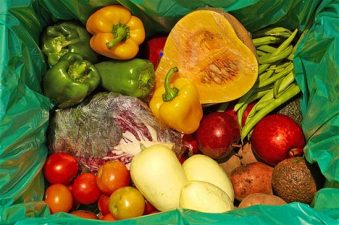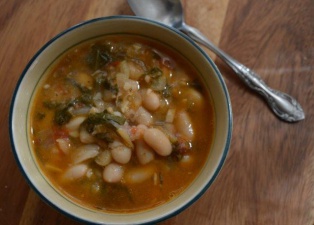 Increasing evidence shows that sugar is a natural enemy to the body.
Increasing evidence shows that sugar is a natural enemy to the body.
“Don’t you think I know how hard it is, honey/To get some “sugar” from the phone,” sings country singer Bonnie Raitt, vividly summing up the difficulty of maintaining a long-distance romance. Sugar represents all that’s sweet and desirable, but in the light of recent studies, sugar may come to stand for poison.
Especially toxic to the human metabolism is high-fructose corn syrup, the evil lurking under the sweetness of popular drinks.Stevia, a naturally sweet green herb, will hopefully replace it in commercial drinks and foods.
The historical statistics are startling. The average sugar consumption in 1700 was 4 lbs – a little under 2 kg, yearly. Compare that to the yearly sugar intake of as many as 50% of today’s Americans: 180 lb. (81.647 kg.) of sugar per year. That’s half a pound – 250 grams of sugar, every day. Looking at the numbers of obese people on the streets in many other countries, like in the Middle East, it’s easy to see that the rest of the world isn’t far behind.
How much harm can one little candy bar, one little can of soda, one little handful of cookies do? We’ll brush our teeth right afterwards – we know about sugar and tooth decay. And OK – empty calories, we know about that too. But today’s research argues that sugar – and especially high fructose corn syrup – isn’t just an inert substitute for nourishing foods, it’s a toxin in and of itself.
Dr. Robert Lustig, a specialist on pediatric hormone disorders and the leading expert in childhood obesity at the University of California, San Francisco, School of Medicine, is one of the pivotal figures in the campaign to bring this controversial topic to the public’s attention. His aim is to get sugar recognized as a substance as dangerous to human health as tobacco and alcohol.
The body metabolizes glucose from starches like bread and potatoes in a different way than it processes straight fructose: for example, the sugars in juices and sodas. These sugars reach the liver quickly, so it has to work harder and faster to metabolize them. Too much sugar, too fast, and the liver turns these sugars into fat. In the meantime, the pancreas, trying to pump more and more insulin to deal with the sugar, eventually gives up: this is insulin resistance.
This, put in the simplest terms, is the basis for the rampant obesity, heart disease and diabetes that plagues the Western world today. Even scarier, research analyzed by Lustig indicates that excess insulin produced by an overworked pancreas feeds cancerous cells. In other words, it’s not only about the fat around the tummy, a tired heart (now even in kids that drink soda) and a daily insulin injection – it’s about the ever-higher cancer rates in our society. In our communities and homes.
While the sugar industry tries to convince the public that their product is actually a weight-loss tool, the public is getting savvier about the real dangers represented by sugars of all kinds. More people are reading labels critically before taking products into their kitchens. Yet there’s still lots of sugar that goes unnoticed because labels hide it under names that are hard to understand.
Hidden names for sugar
Any word ending in “-ose” (maltose, dextrose, lactose, fructose), and including malt, rice syrup, treacle or panocha mean sugar in one form or another.
And just because the word “sugar” is paired with another word, as in “inverted sugar,” it doesn’t mean that the sugar has been refined enough to become harmless. There is no harmless sugar – not even agave syrup. Those words on the labels are all red flags for the consumer who wants to control how much sugar goes through his blood. See our previous post about the hidden “natural” sugar in your food.
Lustig’s campaign against sugar, once thought of as the radical fringe in health care, is becoming more and more widely accepted in medical circles. Now it’s up to the consumer – you – to carefully eliminate foods containing sugar from the daily diet. It’s not likely that people will go back to 100% food cooked at home like Grandma used to serve.
But if you want to make a difference in the quality of the foods you buy, show the food industry that you mean it, with your power of purchase. Don’t eat or buy sugary junk foods. Drink much, much less soda. Demand stevia-sweetened drinks (not drinks sweetened with the abhorrent aspartame).
To your good health.
You can watch Dr. Lustig’s lecture, “Sugar: The Bitter Truth” here. Be prepared for an hour and a half of new and startling information.
[youtube]http://www.youtube.com/watch?v=dBnniua6-oM[/youtube]
More about sweet, sticky sugar on Green Prophet:
- GMO Beets Coming To A Sugar Supply Near You?
- Energy Drinks And Five Really Good Reasons To Avoid Them
- Sodas and Juice Cause Long-Term Liver Damage
Image of woman checking food labels via Shutterstock




Maureen, how about you keep using HFCS and other sugars “in moderation”, and I’ll avoid HFCS like the plague and use only very tiny quantities of all natural raw honey and cane sugar and we’ll meet up in 20 years and compare health and weight.
Enjoy your safe HFCS.
High fructose corn syrup is a common liquid sweetener made from corn that is used in many foods and beverages. It is a safe ingredient and has been approved for use by the FDA. Despite its name, it is not high in fructose. In fact, just like table sugar (or sucrose), HFCS is a combination of two simple sugars – glucose and fructose. The American Medical Association has concluded that high fructose corn syrup is not a unique contributor to obesity (http://www.ama-assn.org/resources/doc/csaph/csaph3a08-summary.pdf). Research on high fructose corn syrup has shown that it is nearly identical in structure to sucrose (table sugar). In fact, it is so nearly identical that your body can’t tell the difference between the two, and processes both in the same way. Quite simply, sugars are sugars and should be consumed in moderation, like all foods and beverages.
First I thought this was the Onion. Then I realized it wasn’t and began weeping for humanity.
How poetic.
The more sugar you eat, the more sugar you crave.
If you think you can’t live without sugar, try reducing the amount of sugar you eat gradually. Then, when it’s down to a more reasonable level, try a few weeks of zero sugar. You’ll be shocked at how little you miss it (as in not at all).
If you reduce your sugar intake over time, you’ll find that you can’t eat those cookies and cakes any more. They are sickeningly sweet.
I wish more were as sensible as you, JTR!
My tolerance for sugar has disappeared over the years so that now if I indulge my taste for sweets I get very painful urination. (I guess some people are more susceptible to diabetes than others). Thus, I have added sugar to the things I avoid, like caffeine, alcohol, and of course meat, since I’ve been a vegetarian since 1975. Caffeine knocks down a person’s immune system so they are susceptible to virus attack, and I know many people for whom this is so and I advise them to quit coffee for that reason.